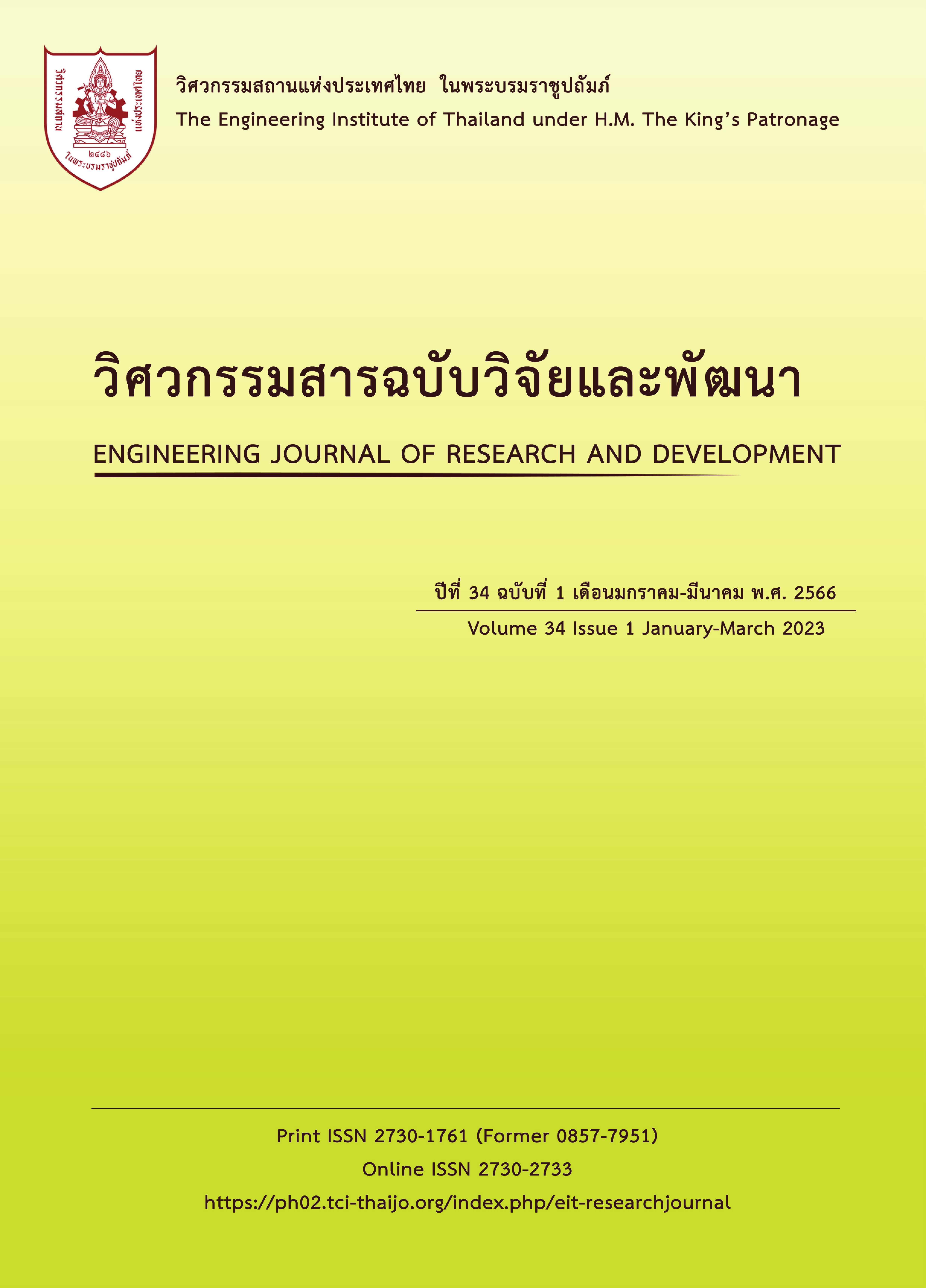APPLICATION OF SUPPORT VECTOR MACHINE AND NEURAL NETWORK TO FORECASTING CONSTRUCTION QUANTITY IN THAILAND
Main Article Content
Abstract
The objective of this research is to study the application of support vector machine techniques and neural network techniques for forecasting construction quantity in Thailand. The selection factors used in the development of support vector machine and neural networks models to predict other construction volumes the government in Thailand consists of 4 factors: T35, Disposal of Current Revenue, T72, Private, T109, Non-residential and T122, Total C.i.f. Value, a forecasting model using vector machine support techniques. Uses the Radial Basis Function (RBF) kernel function to map the data. The predictive model using the neural network technique used the Gaussian function to convert values, used the cross-validation method, divided the data into 10 groups (10-fold cross validation) Teaching and testing data to measure model performance. Model results are specified as Mean Absolute Percentage Error (MAPE). Techniques that support vector machine. The result for MAPE is 1.31 and the coefficient of determination (R2) is 0.998. and Techniques that Neural Network. The result of the MAPE is 6.41 coefficients. and the coefficient of determination, (R2) of 0.982 is closer to 1, indicating that the model is appropriate. Research results have clearly shown that a support vector machine modelling technique can be used. and the neural network in time series forecasting of construction volume compared with the construction estimate of the Office of the National Economic and Social Development Board found similar effects. This is useful for organizations as the forecasting process is relatively simple, essential for planning, decision-making and management.
Article Details

This work is licensed under a Creative Commons Attribution-NonCommercial-NoDerivatives 4.0 International License.
The published articles are copyright of the Engineering Journal of Research and Development, The Engineering Institute of Thailand Under H.M. The King's Patronage (EIT).
References
ชุมพล ศฤงคารศิริ. การวางแผนและควบคุมการผลิต, พิมพ์ครั้งที่ 10. บริษัท ที เอส บี โปรดักส์ จำกัด: กรุงเทพมหานคร, 2545.
นพพร โทณะวณิก. ประสบการณ์วิชาชีพการจัดการงานก่อสร้าง, สำนักพิมพ์มหาวิทยาลัยสุโขทัยธรรมาธิราช: กรุงเทพมหานคร, 2549.
อภิชาต บัวกล้า. แบบจำลองโครงข่ายประสาทเทียมสำหรับการคาดการณ์ปริมาณงานก่อสร้างในประเทศไทย. วิทยานิพนธ์ ปริญญาวิศวกรรมศาสตรมหาบัณฑิต สาขาวิศวกรรมโยธา, มหาวิทยาลัยนเรศวร, 2548.
Li, H. and Zhang, X. Introducing a New Method to Predict the Project Time Risk. Journal of IEEE Computer Society, International Conference on Information Management, Innovation Management and Industrial Engineering, 2009, 164, pp. 27-30.
Tanratnawong, S. and Scott, S. A neural network model to forecast national construction output. Journal of Financial Management in Construction and Property, 2000, 5, pp. 65-77.
Vapnik, V. The Nature of Statistical Learning Theory, New York: Springer-Verlag, 1995.
Phillip H. Sherrod. DTREG Predictive Modeling Software, Copyright 2003-2007. Available from: https://www.dtreg.com. [Accessed 15 September2022].
สำนักงานคณะกรรมการและการพัฒนาการเศรษฐกิจและสังคมแห่งชาติ. (ไม่ปรากฏวันที่ เดือน ปีที่ เผยแพร่). บัญชีรายได้ประชาชาติ ปี พ.ศ. 2503 - 2562. จาก: http://www.nesdb.go.th/econSocial/nad.htm [สืบค้นเมื่อวันที่ 20 มิถุนายน พ.ศ. 2565].
มูลนิธิประเมินค่า-นายหน้าแห่งประเทศไทย. (ไม่ปรากฏวันที่ เดือน ปีที่เผยแพร่). ราคาประเมินค่าก่อสร้างอาคาร พ.ศ. 2565. จาก: https://www.thaiappraisal.org/thai/value/value.php [สืบค้นเมื่อวันที่ 30 กรกฎาคม พ.ศ. 2565].


